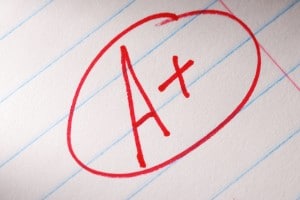The only true evaluation of a student is authentic assessment, which incorporates a variety of measures into the evaluation process and focuses on formative assessment.
Authentic Assessments Support Increased Rigor for All Learners
 How we assess students’ understanding of the content we are teaching is critical to a responsive instructional process designed to increase rigor as well as support higher level thinking.
How we assess students’ understanding of the content we are teaching is critical to a responsive instructional process designed to increase rigor as well as support higher level thinking.
Unfortunately, schools are often locked into using multiple-choice tests, standardized measures of student achievement, and other traditional forms of written assessments.
Testing In Only One Standardized Way Is Unethical
One could make an argument that standardized testing must be the measure that teachers use because it is the measure required for state testing. However, not only is standardized testing inaccurate, I would also argue that it is and unethical means of evaluating students.
True Assessment of Student Learning
The only true evaluation is authentic assessment, which incorporates a variety of measures into the evaluation process and focuses on formative assessment.
Some types of authentic assessment include:
- Rubrics are performance-based assessment tools used to evaluate student performance on a task, a set of tasks, or a learning outcome. Rubrics use specific criteria, in the form of narrative descriptions, as a basis for evaluating student performance. Most rubrics use a tabular format that identifies the level of student achievement, from low-to-high or high-to-low, based upon the proficiency that the student is able to achieve or demonstrate. Rating scales may be numerical or qualitative, or both.
- Exit cards are a simple assessment tool. Each card will have a set of just two or three questions for students to answer after you teach a lesson, just before the bell rings. Students must hand the cards in to the teacher when leaving, hence the name “exit cards.” It’s ongoing, immediate assessment in action. Exit cards can be used to gather information on student readiness levels, understanding of concepts, interests and/or learning profiles.
- Curriculum-based measurement helps teachers see how students are progressing in basic academic areas such as math, reading, writing and spelling through short, regular testing of a student’s understanding of the curriculum. By measuring the student’s performance regularly, and over time, teachers can identify parts of the curriculum that need to be taught differently, or again, and make the appropriate adjustments to their lessons.
- Student self-evaluation – students evaluating each other – can be a valuable way to promote critical thinking and practice important interpersonal skills among your students. Students give and receive feedback on the quality of their work (to and from other students) and learn from their peers where they need to focus improvement efforts.
- Documented observations – Observation revolves around individualized time with your students. Spend time watching and listening to the way your students work together and interact on a social level. This works well when you can assign a group activity and circulate around the room, sitting in on each group and making observations. Go into this process with an outlined list of things you are observing for (behavior, skills, performance etc) and add your observations to your overall assessment of each student.
- Hands-on demonstration of learning – have your students show you how to perform specific tasks to demonstrate their understanding of key concepts and ideas.
- Interviews are an assessment strategy that can be used to understand student progress on an individualized basis. Clarify to your students that interviews are not a test but rather a way for you, the teacher, to spend some time one-on-one with each student and understand what they’ve learned and where they need to grow. Go in to each interview with a checklist of benchmarks that each student should have met by this point in the year, as well as some individualized questions tailored for each student and his or her roadblocks, talents and abilities. Help students feel comfortable in the interview, give the experience an atmosphere that is relaxed and friendly.
Student Portfolios Capture Understanding
By assessing with a variety of measures, the teacher can build a portfolio of data that provides an accurate picture of the student as a learner. With this authentic, data-driven student portrait, teachers have the necessary information to do the problem-solving and detective work required for determining appropriate interventions.
Using Authentic Assessment – Angela Hymas

Bring Susan to your campus!
Featured seminar – Response to Intervention (RTI) Strategies

